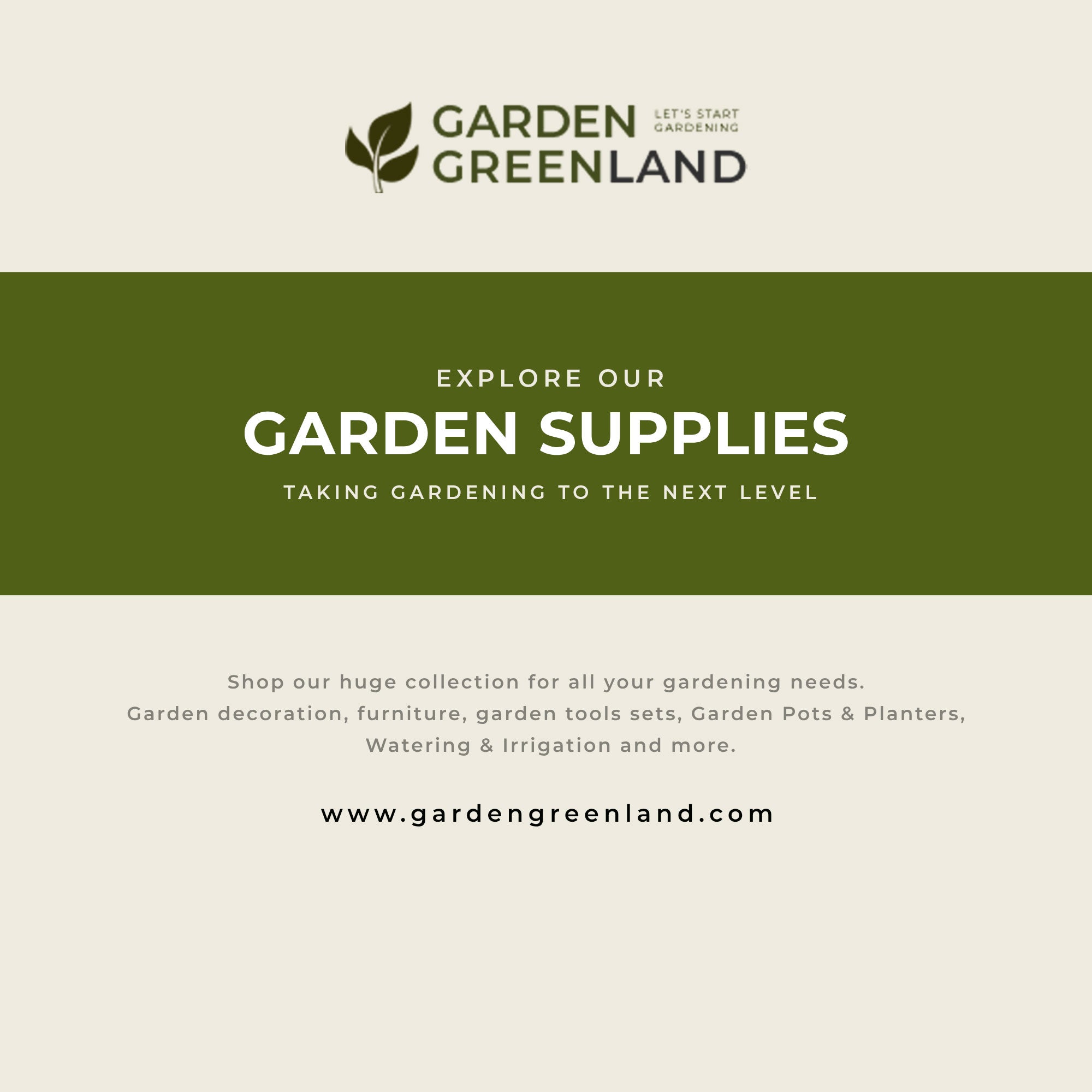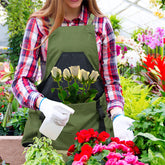How Big Are Grow Bags? Understanding the Perfect Size for Your Plants
Table of Contents
- Introduction
- What Are Grow Bags?
- Common Grow Bag Sizes
- How to Choose the Right Grow Bag Size for Your Plants
- Advantages of Using Grow Bags Over Traditional Pots
- Maintenance and Care for Your Grow Bags
- Frequently Asked Questions About Grow Bag Sizes
- Conclusion
When it comes to gardening, one of the most common questions we encounter is, "How big are grow bags?" Choosing the right size is essential for the health and productivity of your plants. With the rise of container gardening, grow bags have become a popular choice for many gardeners seeking versatility and ease of use. These fabric containers not only promote healthy root growth but also adapt well to various gardening spaces, making them ideal for both novice and seasoned gardeners.
At Garden Greenland, we've embraced the philosophy that everyone deserves to connect with nature through gardening. Our journey began with a passion for the earth and a commitment to redefining the home gardening experience. We understand that selecting the right gardening essentials, including the appropriate grow bag size, can significantly enhance your gardening journey. In this blog post, we will explore the various sizes of grow bags, their applications, and the benefits they offer for different plants.
Introduction
Did you know that the size of your grow bag can directly impact the growth and yield of your plants? Whether you are growing vegetables, herbs, or decorative plants, the right bag size can make a world of difference. As gardening continues to gain popularity, especially in urban settings where space is limited, many gardeners are turning to grow bags for their flexibility and effectiveness.
This post will delve into the various sizes of grow bags, the types of plants that thrive in them, and how to choose the right size for your gardening needs. By the end of this article, you'll have a comprehensive understanding of grow bag dimensions and how they can elevate your gardening experience.
We'll cover the following topics:
- An overview of grow bags and their benefits
- A breakdown of common grow bag sizes and their applications
- Tips for selecting the right grow bag size
- The advantages of using grow bags over traditional pots
- Maintenance and care for your grow bags
- Frequently asked questions about grow bag sizes
At Garden Greenland, we are dedicated to providing high-quality, innovative gardening products designed to empower you in your gardening endeavors. Let's embark on this journey to discover how grow bags can transform your gardening experience!
What Are Grow Bags?
Grow bags are fabric containers designed for cultivating plants, combining the benefits of traditional pots with the added advantages of aeration and drainage. Made from breathable materials, grow bags allow for excellent air circulation, helping to prevent root rot and encourage healthy root growth. Unlike traditional pots, which can restrict root development and lead to root circling, grow bags promote air pruning—a process that encourages roots to stop growing when they reach the edges of the bag.
Benefits of Grow Bags
- Improved Drainage: The porous nature of fabric allows excess water to drain freely, reducing the risk of overwatering and root rot.
- Enhanced Aeration: Grow bags provide increased oxygen flow to the roots, leading to healthier plants and improved nutrient uptake.
- Portability: Many grow bags come with handles, making them easy to move around your garden or indoors as needed.
- Versatility: Grow bags can be used for a variety of plants, from vegetables and herbs to ornamental flowers, making them suitable for any gardening project.
- Reusable: With proper care, grow bags can be reused for multiple growing seasons, making them a sustainable choice for gardeners.
Common Grow Bag Sizes
Grow bags come in various sizes, typically ranging from 1 gallon to 60 gallons. Selecting the right size depends on the type of plant you wish to grow and the space you have available. Below is a detailed breakdown of common grow bag sizes and the plants best suited for each.
1. 1 to 3 Gallon Grow Bags
These small-sized grow bags are perfect for growing herbs, small flowers, or starting seedlings. Their compact size makes them suitable for limited spaces such as balconies or windowsills.
- Ideal Plants: Herbs (basil, cilantro), small flowers (petunias), and seedlings.
2. 5 Gallon Grow Bags
This versatile size is one of the most popular choices among gardeners. It provides ample space for medium-sized plants while still being manageable.
- Ideal Plants: Peppers, eggplants, small shrubs, and single tomato plants.
3. 7 to 10 Gallon Grow Bags
Perfect for larger vegetables, these bags offer enough room for root development and are suitable for plants that require more space.
- Ideal Plants: Tomatoes, zucchinis, and small fruit trees.
4. 15 to 25 Gallon Grow Bags
These larger bags are excellent for substantial plants that need more soil volume and space for extensive root systems.
- Ideal Plants: Potatoes, squash, and larger vegetables that require deeper roots.
5. 30 to 60 Gallon Grow Bags
For those looking to grow bigger plants or multiple smaller plants, these extra-large bags provide the necessary capacity.
- Ideal Plants: Larger fruit trees, multiple vegetable plants, or extensive flower displays.
How to Choose the Right Grow Bag Size for Your Plants
Choosing the right size grow bag is crucial for the success of your gardening endeavors. Here are some tips to consider when selecting a grow bag size:
- Consider the Plant Type: Different plants have varying root depth and spread requirements. Research the specific needs of the plants you intend to grow.
- Assess Available Space: Ensure you have enough room for the size of the grow bags you choose, especially if you plan to move them around.
- Think About Growth: Anticipate the size your plants will reach at maturity. It’s better to opt for a slightly larger bag if you’re uncertain.
- Evaluate Soil Volume: Ensure that the grow bag size provides enough soil volume for proper drainage and nutrient retention for the plants you're growing.
By following these guidelines, you can make an informed decision on the best grow bag size for your gardening needs.
Advantages of Using Grow Bags Over Traditional Pots
While traditional pots have their place in gardening, grow bags offer a range of benefits that make them increasingly popular. Here’s a closer look at the advantages of using grow bags:
- Prevention of Root Circling: The breathable fabric promotes air pruning, reducing the risk of roots circling and becoming root-bound, which is common in traditional pots.
- Temperature Regulation: The fabric allows for temperature regulation, keeping roots cooler in hot weather and helping to prevent overheating.
- Flexibility and Portability: Grow bags can be easily moved around, allowing you to adjust your garden layout or bring plants indoors if needed.
- Sustainability: Made from eco-friendly materials, many grow bags are reusable, reducing waste compared to single-use plastic pots.
At Garden Greenland, we offer a premium selection of grow bags designed to provide optimal performance and enhance your gardening experience. Explore our Garden Equipment Collection to find the perfect grow bags for your gardening journey.
Maintenance and Care for Your Grow Bags
To ensure the longevity of your grow bags and the health of your plants, it’s essential to follow proper care and maintenance practices. Here are some tips to keep your grow bags in top shape:
- Cleaning: At the end of each growing season, empty your grow bags and remove any debris. If needed, soak them in a mild vinegar or baking soda solution to remove mineral buildup. Rinse thoroughly and let them dry completely before storing.
- Storage: Store your grow bags in a cool, dry place away from direct sunlight to prevent degradation of the fabric.
- Reuse: With proper care, grow bags can last for multiple growing seasons—typically 3 to 5 years. Reuse them by simply refreshing the soil and preparing them for new plants.
Maintaining your grow bags will not only extend their lifespan but also ensure that your plants thrive in a healthy environment.
Frequently Asked Questions About Grow Bag Sizes
1. What size grow bag is best for tomatoes?
For tomatoes, we recommend using 5 to 10-gallon grow bags. This size provides enough depth and space for their root systems to develop properly.
2. Can I grow multiple plants in one grow bag?
Yes, you can grow multiple smaller plants in larger grow bags (15 gallons and above). However, ensure that the plants have compatible growth requirements and will not compete excessively for nutrients.
3. Do grow bags need drainage holes?
No, grow bags are designed to allow excess water to drain naturally through the fabric, so you do not need to add additional drainage holes.
4. Are grow bags reusable?
Yes, with proper care, grow bags can be reused for multiple seasons. Clean them thoroughly after each use to maintain their durability.
5. Can I use grow bags for indoor plants?
Absolutely! Grow bags are versatile and can be used for both indoor and outdoor gardening. Their breathable fabric helps prevent root rot, making them a great choice for houseplants.
Conclusion
Understanding how big grow bags are and how to choose the right size is essential for any gardener looking to maximize their plant health and yield. With a diverse range of sizes available, grow bags can accommodate various plants, from herbs and vegetables to flowering plants and trees. Their unique advantages over traditional pots make them a fantastic choice for both novice and experienced gardeners alike.
At Garden Greenland, we believe that everyone should have the opportunity to connect with nature. By selecting the right grow bag size, you're one step closer to creating a thriving garden that brings joy and fulfillment. We invite you to explore our Garden Tools Collection to find the perfect tools and supplies to enhance your gardening experience.
Now that you have a comprehensive understanding of grow bags and their sizes, we encourage you to reflect on your own gardening projects. How can the right grow bag size transform your gardening experience? Happy gardening!









